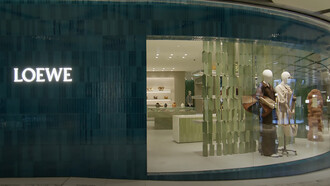In the final part of a four-part article series, Gehan de Silva Wijeyeratne completes the story of how a conservation initiative in Britain became the template for a luxury hotel in Asia set within a man-made wetland.
The hard part, the pioneering engineering of a wetland from scratch for a luxury hotel was coming together. Sunela and the engineers and the hydraulic consultants had formed a design of a storage reservoir and a show reservoir which would adjoin the restaurant and reception areas. Water levels for aesthetics and wildlife would be managed by a suite of sluices and channels that would regulate wetland life. Already there were early supporters. Local crocodiles had moved in prompting a visit by the Department of Wildlife Conservation who had been tipped off that a new hotel was keeping protected animals. The crocodiles had an acute appreciation of aesthetics and also became fond of the infinity pool that Jude had laboured over.
There were new challenges to be met as the old ones were being met. How does one service a hotel to luxury standards when the hotel is so spread out? There were serious logistical issues to be overcome including the constant battle to maintain a property immersed in a wetland. Fierce debate ensued between everyone who was involved. Not everyone agreed with everyone. Herbert and Shiromal must have watched with growing alarm as the whole wetland project seemed in danger of imploding as timetables overran, every bend on the journey yielded fresh challenges and nervous investors asked for answers. As two of the key project proponents Hiran and I stood at the centre of the storm, clear on a common goal but at times holding surprisingly opposite views on fundamental questions. At times this must have made it difficult for everyone who was seeking clarity on the way forward. Fortunately Ruan, probably the greatest human resource asset in the Jetwing group skillfully brokered compromises between the directors, architect, engineers and hotel operations staff to keep the project moving forward like a rivulet purposefully snaking to the sea.
Like in all good stories scripted on TV for the A Team, the plan eventually all came together. So many people played an important part in the project bearing fruit that the roll of credits will run into several pages. I have only mentioned a few people here to make a chronological storyboard narrative. Jetwing Vil Uyana has gone on to win several awards for its pioneering efforts just as its source of inspiration, the London Wetland Centre has garnered several environmental and visitor attraction awards. As Hiran said in one of his speeches, Jetwing Vil Uyana is a tribute who to all of those who worked on it and believed that the private sector can absorb concepts from the conservation movement into its suite of ethical business solutions.
I have been writing this article in dribs and drabs on my iPhone and I am finishing it off at a bird watching hide in the London Wetland Centre. Its December 2014, fifteen years since I had first seen the London wetland and twelve years since the visit with Hiran and Shiromal. The calls of Cetti's Warbler's cut through the cold air. The southward flow of the northern ice sheets has been well under way in its seasonal movement locking water into ice. Waterfowl fleeing the icy grip of the high latitude winter had arrived. I watch as Northern Shoveler, Wigeon, Teal and Gadwall criss-cross the cold skies on their migration. A few thousand kilometers, to the east and further south, is an island where birds from the Arctic Circle in Northern Asia would also have arrived. Britain is an island surrounded by the cold Atlantic. The other island is surrounded by the warm tropical Indian Ocean upon which Blue Whales, the largest animal to have lived on the planet sends watery beacons three storeys high to mark its arrival on migration. It is an island upon which a thousand man-made lakes glitter in the setting sun like a string of jewels, hosting wetland wildlife and maintaining an ancient bond between people and wildlife.
Read also Part Three
Acknowledgements
In an article of this nature, it is not possible to mention everyone who was involved in the making of Vil Uyana. A very large number of people were involved. I would like to record my thanks to all of the people who contributed to this path breaking project. My thanks also to Tara Wikramanayake who assisted me by copy editing this article.















